Put another way: what do Michelangelo and Mark Armstrong have in common? (besides artistic brilliance, I mean)
The answer lies in the following quote:

Every block of stone has a statue inside it and it is the task of the sculptor to discover it.
–Michelangelo
I agree– I’d just phrase it differently:

Every block of text has an illustration inside it and it is the task of the illustrator to discover it. –Mark Armstrong

It’s a mistake to think that certain industries, businesses, or topics don’t lend themselves to illustration. There’s an illustration in every block of text, no matter how technical or obscure the subject. That’s good news because we live in a visual age. Images are crucial for social media and content marketing success.
I love the challenge of finding the illustrations hidden in blocks of text. The articles I illustrate for The Rumpus can be a challenge, because they often feature difficult, sometimes off-putting subjects.

One memorable Rumpus assignment featured 7 short vignettes. Here’s the first one:

I miss that warble-y fake pathos from the 80s, à la Ric Ocasek. We will never be the same. Our pathos is real, but turned inside-out so as only to appear that way. When I was in 7th grade I had a science teacher called Mrs. Harris. She collected road kill and kept it in the classroom freezer for use during animal anatomy lessons. One time she pulled out a fresh raccoon, stuck her hand in its ripped abdomen, flipped its skin inside-out and waggled its leg. The classroom duly exploded in screams and groans. I remember noticing how much she enjoyed her performance. One time there was a weekend-long power outage and all of Mrs. Harris’s specimens defrosted. On Monday morning the school reeked and the classroom was cordoned off, but I must have gotten in somehow because I know that this was the first time I saw maggots.
Which conjured up this “cheerful janitor” image:

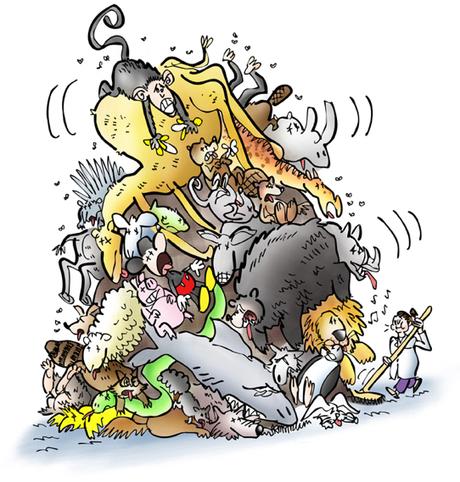


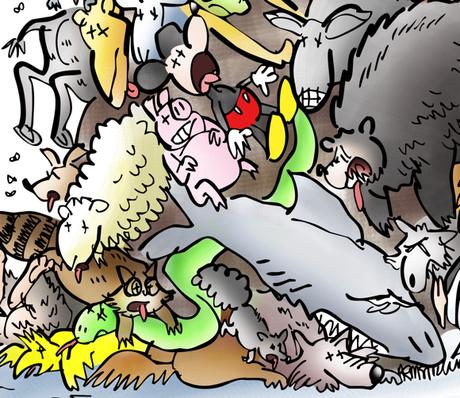


When I can’t fall asleep at night first I count backwards from one thousand, and then I try to figure out why I am awake when the body most often possesses the means of its own mitigation—you rub spit on a mosquito bite, step on your stubbed toe, feel metaphoric, e.g., “make the most of every moment” (your life is not a bag and the capacity of time is always the same). We are so pleasingly self-contained, like one of those triangular single-slice pizza boxes you see at the airport. Of course, once it’s emptied and thrown away it looks like a head, homesick for its all-but-self-same contents. Did you read that story in the New Yorker about the woman whose unrelentingly itchy scalp caused her to scratch right through her cranium? The itch was imaginary, but what’s the difference? She scratched all the way through to her brain.
I’m not a gambler myself, but scratching made me think of lottery tickets.

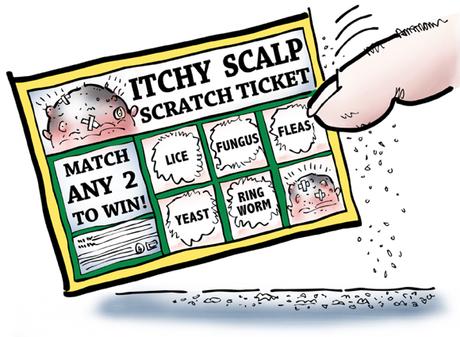





When I was eight I cut off a third of my right index finger by shutting it in the door of my parents’ Ford. I remember standing in the driveway with my hand against the car, stock-still and hesitating to scream because I didn’t want anyone to come open the door and let my finger fall out. I think it was Michelangelo who talked about releasing the man from the marble, although I might have read that in The Agony and the Ecstasy, which is an incomparably cheesy novel. In any case, I was severed that day from the fact of my shape and rendered over again in veiny gray stone. They sewed my finger back on but it’s always felt like the wrong one, a victorious foam extremity stabbing from the neck of Winged Victory. There was a crowd around her at the Louvre, or was that Venus?
Surgical reattachments and the famous Venus de Milo sparked this idea:

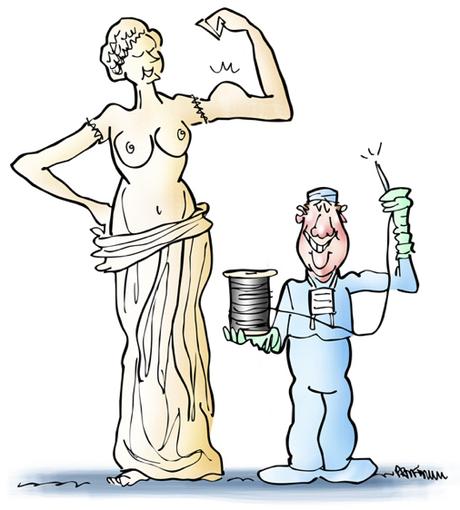


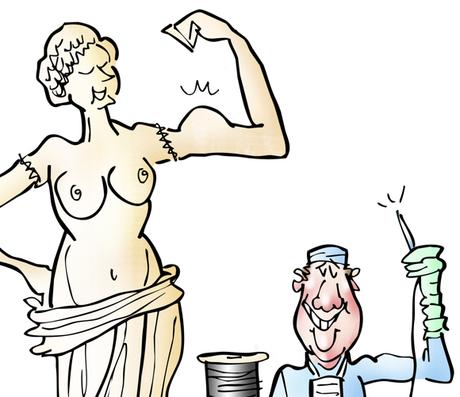


When I was young I loved catching, no, standing on the threshold between states, say when the streetlights stuttered on at twilight. I would try to see the stick-numbers rearrange on the digital clock. What I really wanted to see, though, was the green flash that is said to sometimes spread across the sky at the exact moment of sunset over the ocean. I gazed at the horizon until it became painful. Research reveals disagreement about whether or not this is even a real phenomenon. Either way, to see it would apotheosize the threshold, although I am equally rewarded with this triangular or tripartite space between real and not-real and the unknown. What if there isn’t even an answer? Here I am, stuck in a staring contest with the void while over there my kid’s lower lip is twisted, trembling with potential energy. Just don’t wake me when it’s over.
The idea of a staring contest with the void made me laugh. I tried to envision what it might look like…

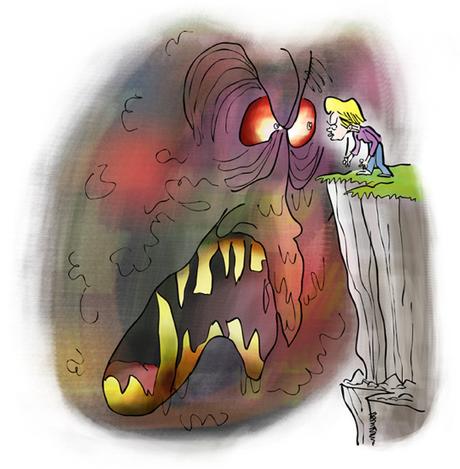


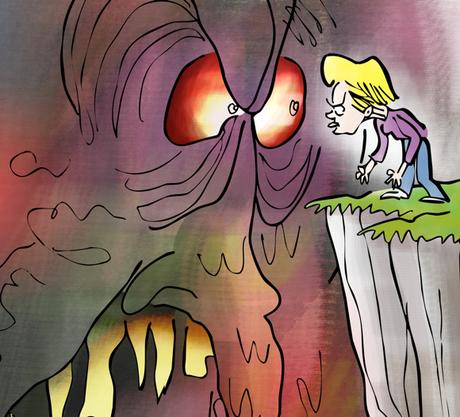


A good illustrator can discover that image, refine it, and yes, sculpt it to align with a brand. That image will bolster the text by drawing attention to it. Ideally, the image will also attract advocates: people who will want to share the image (and the post) with their friends.

One interesting final note: you may have noticed that the four text blocks are about the same length. That was no coincidence.
The author concluded her mini-essay collection with this statement:

As a poet I know of the surprising things that can be said under the pressure of constraint, and I wanted to apply the same pressure to the lyric essay. Each essay in this series is exactly 150 words long.
I agree with her about the power of constraints. If an artist works without constraints, doing whatever he wants, his work will tend to be weak and self-indulgent. With constraints in place, however– the client requires that the work have this, that, and the other thing– the artist has to focus and find creative ways to satisfy the constraints. The result is almost always a stronger, more successful piece of work.

As mentioned, the Rumpus article had a total of 7 short essays. I did an illustration
for each. You can see the entire post here, on the Rumpus site. (Note: click on the illustrations to have them display at full size in their own window.)

* * * * * * * * * * * * * * * * *

Would you agree that good customer service always involves working under constraints, i.e., meeting specific customer needs?
Do you think believing there’s a solution (that it’s present, but hidden) makes us more likely to discover it?
Have you ever used a coin to scratch someone’s head on a lottery ticket??

